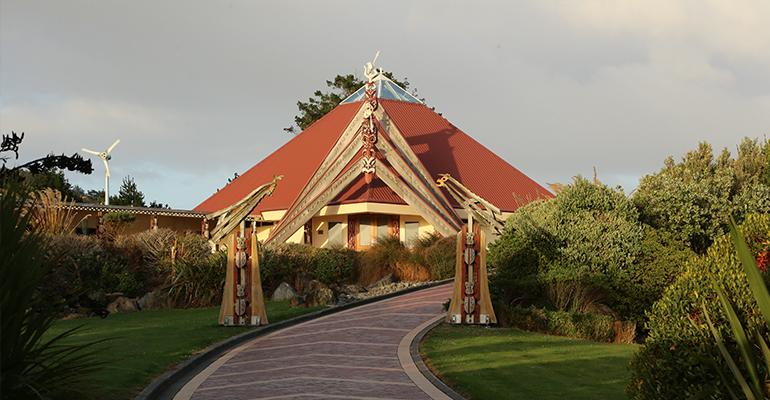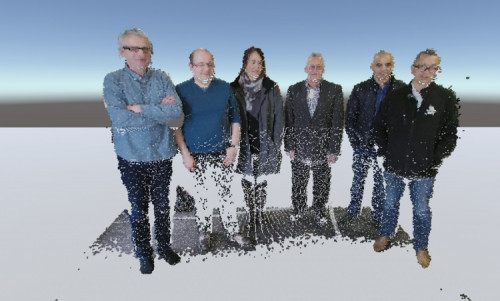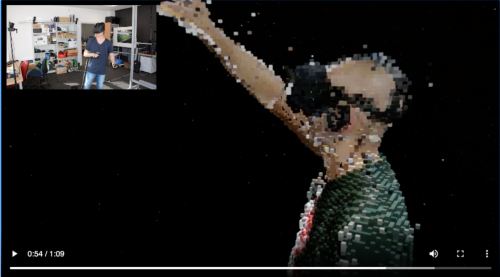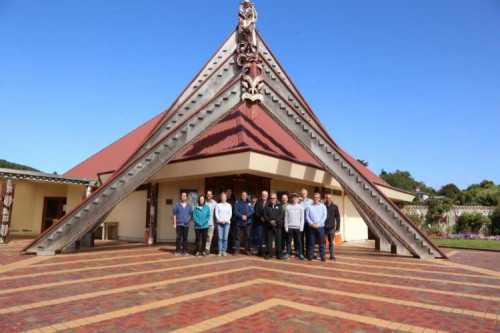Ātea
How can the feeling of being kanohi ki te kanohi be created when people are geographically dispersed and in a virtual environment? SfTI researchers have designed and built Ātea, an immersive experience that draws on Māori protocol and world views as well as new technologies.

The aim is to preserve and share knowledge, language and culture in the digital realm. Ātea is described in te reo as space, a wide expanse, or something that is clear and free from obstruction.
Team
Snapshot
Ātea incorporates augmented, virtual and mixed realities to share history, knowledge and stories, with a customised content management system to connect dispersed communities.
Research brings together experts in Artificial Intelligence (AI), Virtual Reality (VR) and Artificial Reality, Natural Linguistic Programming, and Machine Learning with leading Māori academics engaged in Indigenous and Māori Data Sovereignty and digital repositories, Māori industry partners, tohunga, iwi, hapū, marae, whānau, rangatahi and collaborators.
This Spearhead project taps into the growing Māori digital economy by looking at tikanga, presence/telepresence, core systems and reo AI.
Creating a Māori experience in the digital realm
This Spearhead project emerged from a Science for Technological Innovation (SfTI) workshop, where Te Whānau-ā-Apanui tribal leader Rikirangi Gage posed an intriguing question:
“What if in 200-300 years’ time I was able to be a hologram and my mokopuna could sit there and talk to me and I could explain, for example, how the Star Compass worked. Wouldn’t that be awesome!”
That vision motivated University of Waikato Associate Professor Dr. Hēmi Whaanga to develop the concept of Ātea, a digital space that uses new technologies and novel approaches to enable Māori to interactively engage with their language, culture and knowledge. The multidisciplinary project team has designed an immersive experience for future generations, addressing the Vision Mātauranga goals of the SfTI Challenge, to connect dispersed Māori communities.
The project continues to wānanga with key informants to understand the impact of these technologies on tikanga and mātauranga. Ātea advisors pose fundamental questions during design and development. Notions such as 'does artificial intelligence have a wairua (soul), or a mauri (life force)?' are examples of the concepts that need to be addressed.

A suite of digital tools centred around Maori identity
The Ātea Core is a fully searchable database of spoken, written and visual content, developed and extending the capabilities of the Open Source Greenstone Digital Library software. It is a framework that stores, protects and shares the mātauranga held in the Core.
As the diversity and amount of content in the Ātea Core grows, the research and development will focus on incorporating non-text content forms, such as audio and video into the system resulting in additional sensory elements. So, for example, users will hear and feel thunder when it is described by the storyteller.
An output you can try out for yourself is the te reo Maori NLP Interactive Automatic Speech Recognition Editor. The Māori-language based web content identification software has been released as open source software and this software is getting better at identifying different voices.
Bringing Bluff to the world
Eighty percent of the population born in Motupōhue Bluff now live elsewhere. The telepresence aspect of the Ātea project used this area as a focus to look at how oral, direct communication can be supported. Elements considered included tika (accuracy), pono (truthfulness), and manaaki tangata (ensuring cultural safety of researchers, rūnanga, iwi, community, tauira and participants).
The project created an experience where users wear a VR headset to explore a 3D recreation of the Te Rau Aroha Marae built from thousands of digital images. The user can access the meaning and stories behind the Wharenui’s ornate panels by watching and listening to a telepresence explanation. This uses virtual, augmented and mixed realities controlled avatars for storytelling and immersed experiences from different locations.
For an example of what this can look like see the recorded video session by Noel Park, one of the team’s PhD students, interacting with the voxel-captured rendition of Dr Hēmi Whaanga, giving an explanation of the stars.

In early 2021, initial trials with iwi collaborators took place at the marae to test the impact of the interactive, multi-sensory experience to understand how people experience Ātea.

Weaving strands together
All the different elements of Ātea are brought together as https://atea.space/content/
Ātea in the media
Stuff: A digital marae with far-reaching implications for the future of te Ao Māori in the tech sector
Read an article from Stuff about the project and the virtual marae they are building for those who whakapapa to Te Rau Aroha Marae - the world's southern-most marae located in Bluff. Published on the Stuff website 16 March, 2021.
In October 2022, Ātea was highlighted in The NZ Herald and The Spinoff.
Check out the two pieces, including a video about the project in the NZ Herald.
In January 2023, Ātea was featured in a compelling episode of Waka Huia
In this episode, you will see Sir Pou Temara talk in depth about technology and tikanga.
Project background
This Mission-led Spearhead Project commenced in 2018, ending in June 2022 and has received a total of $4.2M funding. Find out how we develop our Mission-led projects.